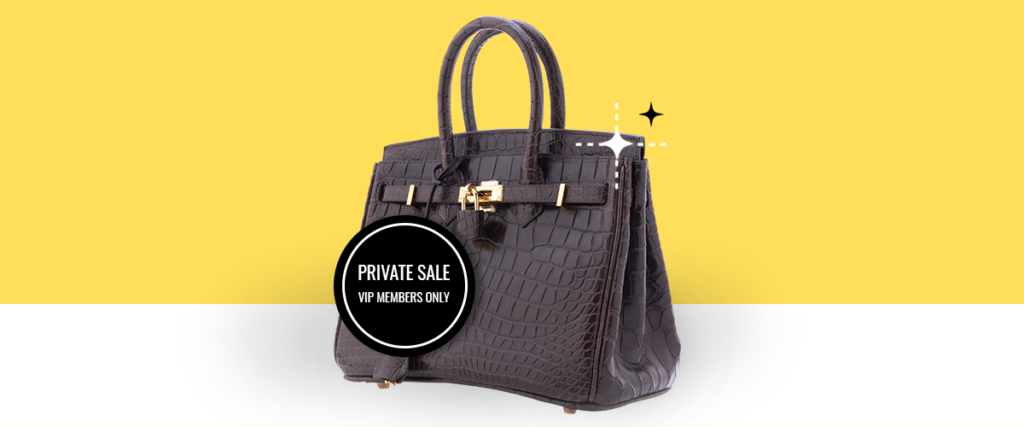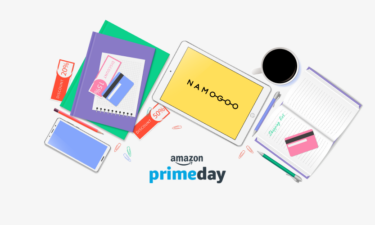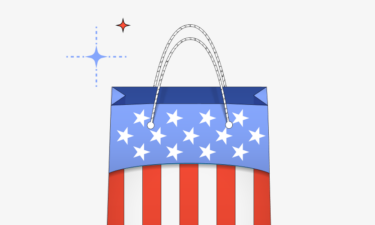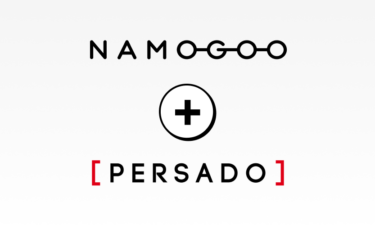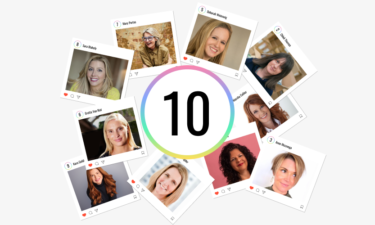It’s no secret that the competitive landscape for retailers is getting more unpredictable and challenging. This extends to high-end brands that feel the need to keep up. A proven way to secure sales and stay ahead is by offering promotions, but this can go against luxury brands’ image of prestige. How does one balance discounts and exclusivity?
This blog examines the overall state of premium brands and promotions in the world of online retail, and how high-end brands can implement strategic discounts and still maintain a strong association of prestige.
An Overview of Luxury eCommerce Retail
Today, it’s no longer uncommon to see high-end brands online, but it has not been always the case. Pre-pandemic, most have been slow in adopting and establishing a digital presence. Having more affluent shoppers online, however, has given luxury retail an incentive to embrace eCommerce.
Stepping Up Digital Presence to Reach More Luxury Shoppers
The luxury goods market has been consistent profit-wise since 2012. Although there was a slight slump in 2020, owing to the pandemic that inclined consumers to spend less, the sector has recovered since. As the graph below shows, 2021 saw a significant increase to nearly $108.4 billion in earnings, higher than any year in the last decade. The number is projected to grow even more, with estimates reaching $132.8 billion in revenue worldwide by 2025.[*]
Revenue of the Luxury Fashion Market Worldwide from 2012 to 2025
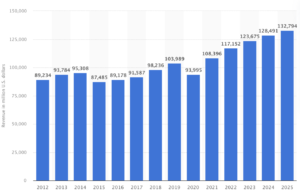
Source: Statista
The figures are partly an effect of luxury brands stepping up their digital presence. The pandemic was an important catalyst: it increased global spending and the number of products sold online. The luxury goods market was forced to follow trends to meet the new reality of wealthy online shoppers.
Online Luxury Retail: Hesitations and Trends
The transition online was not easy. Many high-end brands were reluctant to sell online before 2020. Making their products available online run the risk of negatively impacting the sense of exclusivity they encourage and minimizing brand perception. Lack of control in an environment where they have limited experience was also a glaring issue.
However, consumers are adapting more than ever to newer technology, effectively changing how they shop. Having an online presence allows brands to meet customers where they are, opening opportunities not only to increase revenue but also to reach a new audience. From invite-only events to well-orchestrated campaigns, unique shopping experiences that convey a sense of scarcity and higher social standing are doable through eCommerce. If luxury brands want to stay current, they must adjust to the current retail landscape and expectations of luxury shoppers.
High-end brands are partnering up with more experienced companies in the digital space, revolutionizing the way they create and sell products. Recently, among the explored digital strategies are non-fungible tokens (NFTs) and gaming. This is a stark contrast to the traditionally conservative industry that is very protective of its heritage.
Keeping up with emerging technologies and immersive experiences, however, lets luxury brands reach younger consumers, such as millennials and Gen Z shoppers, who are more comfortable with technology and expect brands to provide great convenience when shopping. More importantly, this also prepares luxury brands for what’s coming next. As Deloitte[*] pointed out, over two billion Gen Alpha—those born since 2010) consumers—who are primarily living in a digitalized economy and a globalized world, are the new cohort of shoppers that luxury brands must learn how to develop a relationship with.
The High-End Shopping and Discounts Dilemma
Like other consumers, luxury shoppers have long wanted and expected discounts. About 50% of global luxury shoppers[*] only purchase when luxury items are discounted. As the pandemic hit and impact spending behavior, the trend continues to this day.
It’s understandable, however, that high-end brands are wary of executing promotions. Some choose to discount older collections to drive prices up for recent releases. Others do not run promotions at all, maintaining tight control on inventory and seasonal items. Discounts are a double-edged sword in that they can do wonders in the short term but also destroy brand image when done every so often. As seen in the graph below, several luxury brands dialed down offering discounts on multi-brand websites from 2019 to 2021.
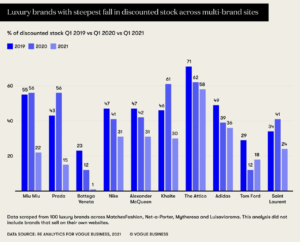
Source: Vogue Business
So, what are luxury brands doing now in terms of promotions? One approach is having a ceiling for discounts. Being strategic about frequency and when to drop holiday promotions also matters because too many promotions might have customers associate their brands with discount shopping. Beyond discounts, luxury brands also augment their efforts to stay competitive by focusing on strong customer service, creating limited, highly coveted collections, nurturing existing brand prestige, and taking care of loyal customers.
5 Strategies for How to Offer Promotions and Retain Prestige
How do high-end brands who have a goal of maintaining exclusivity, quality, and scarcity do promotions right without being able to provide an in-store retail experience? Here are some ways luxury brands can acknowledge consumers’ expectations for discounts without compromising high-end status.
1. Create Private Sales for Members Once or Twice a Year
Luxury brands make the retail experience special by ensuring the utmost privacy of their clientele. Rather than having customers in full display while they shop, private and even secret sales take place so that members can scrutinize and spend in peace. This strategy, long practiced by brands in salons[*] specially made for the occasion, retains scarcity and makes shoppers feel special. Plus, the invitation is not sent out to everybody—just to select wealthy patrons.
That might be difficult to execute online without the benefit of an ambiance and refreshments, but it’s not impossible—Jimmy Choo was able to do so with a private sale online. Customers who wanted access could only do so with a secret link that activated as much as a 40% discount on exclusive products. The time and the products were both limited, and those who retrieved the link afterward can no longer enjoy the special promotions.
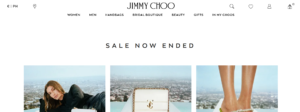
Source: Jimmy Choo
2. Give Exclusive Giveaways and VIP Offers Instead of Traditional Promotional Discounts
The Boston Consulting Group survey[*] found that more than 85% of millennials—and even 75% of baby boomers and older people—who buy luxury brands are ready for so-called omnichannel interactions. Luxury brands can take this a step further and promote exclusivity by delivering coherent and unique shopping experiences shared by very few clients.
Online, this can come in the form of exclusive promotions that customers can earn by buying a particular product. Shoppers can also be rewarded with special events and limited invitations to virtual experiences from reaching a certain purchase amount threshold online. Dior, for instance, has gifts with purchase. These are limited-edition, collectible items that only a select number of customers get.
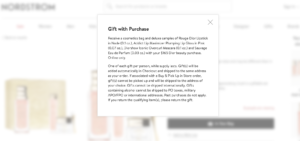
Source: Nordstrom
3. Avoid Sitewide Discounts and Offer Personalized Promotions Instead
We’ve already mentioned how frequent and sitewide discounts diminish novelty and prestige. The better alternative? Premium brands can offer intent-based promotions instead, that reflect customers’ real-time context and stage in the shopping journey.
European linen clothing brand, Son de Flor, had this very concern about promotions but was able to alleviate it with personalized, data-based discounts. Promotions are tailored to each shopper, whether customers are new or returning visitors. The former gets limited-use coupons for their first purchase. Meanwhile, returning customers are led to new, additional offerings with corresponding discounts. This strategy was able to drive conversions while also maintaining brand perception.

Source: Son de Flor
4. Deliver Promos that Celebrate Shoppers’ Individuality
Mad Men’s Peggy Olson once made an astute observation on consumers that still rings true today: “I don’t think anyone wants to be one of a hundred colors in a box.”
Brands succeed when they make customers feel special by celebrating their individuality and personal successes. It can be as simple as offering complimentary engraving on jewelry. Or, it could be as customized as Pandora’s discounts depending on customers’ profiles. Are they a student or a professional? Are they celebrating their birthday? Luxury brands can also be champions of social causes that matter to their target audience, ensuring customers spread positive influence with every purchase they make.
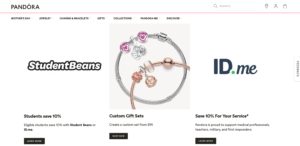
Source: Pandora
5. Have Unique Experiences and Offers on Different Channels
It pays to know and meet customers where they are. A campaign that works for one segment won’t necessarily work on another. Luxury brands can hold sales that are exclusive to a certain channel instead of having them everywhere that’s possible. This ensures that customers have a unique experience wherever they go despite shopping with the same brand.
Burberry has been able to execute this with innovative experiences. The offer is different online and in-person, ranging from augmented reality to NFTs on the Burberry website, Singles’ Day-specific campaigns on online luxury marketplaces like Tmall Luxury Pavilion by Alibaba, as well as flash sales on WeChat.
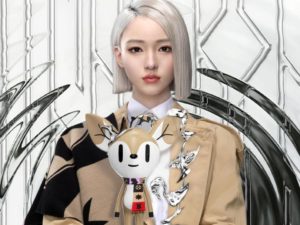
Source: Forbes
Balancing Luxury and Profits with Meaningful Promos and Shopping Experiences
It can be a challenge to strike a balance between satisfying consumers’ desire for discounts and maintaining brand perception, but it’s possible. As the above examples demonstrate, the key is to establish a differentiation by offering discounts only when they seamlessly blend with the overall brand story and individual customer journey.
Developments in recent years have made it necessary for luxury brands to go digital, especially with customers more willing to buy high-ticket purchases online. It’s projected that a third of luxury purchases are going to take place online[*]. Now, it’s not just about accelerating the transition to digital spaces but also creating a compelling luxury shopping experience—tailored to each customer—where discounts are not seen as a detriment but an advantage.



